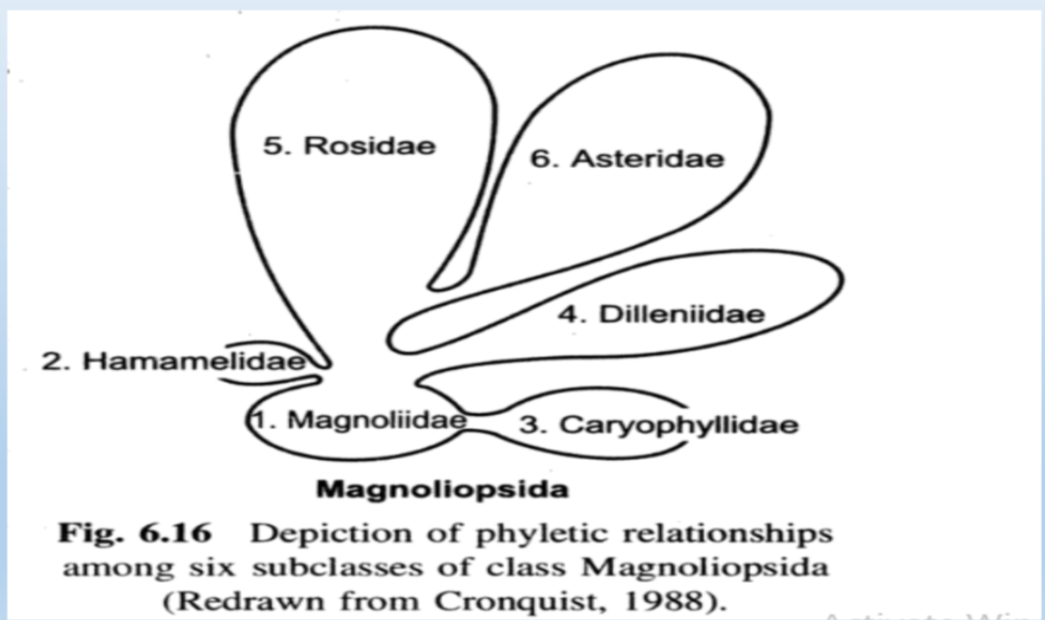Cronquist System of Classification
Type of classification: Phylogenetic
History
Arthur Cronquist was an American taxonomist proposed his system of classification in 1957. Later in 1966 he collaborates with Thakatjan and Zimmerman and proposed classification of embryobionta.
In 1968 he gave a detailed classification of angiosperms in his book The Evolution and Classification of Flowering plants.
This system of classification is quite elaborative.
As an educator he is the author of two famous books - Introductory Botany and Basic Biology.
Basis and Outline
The system of classification was based on evidence derived from all sources including phylogenetic features, plant habit, stem, leaves , flower, pollen grain, placentation , ovule and the embryo.
The system is also based on concept of Totality (sum of Similarities and Differences among Angiosperms)
His system of classification was parallel to Takhtajan system.
The system include 83 orders and 383 families.
The 83 orders were kept under Magnoliopsida.
Magnoliophyta also known as Angiosperms were divided into two classes-
1.Magnoliopsida 2.Liliopsida
The class Magnoliopsida includes the dicotyledons while Liliopsida includes Monocotyledons .
Magnoliopsida as well as Liliopsida were divided into Subclasses respectively.
Sub-Classes of Magnoliopsida: -
1. Magnollideae :- Include plants with many parted flowers. the first order was Magnoliales under this subclass.
2.Hammelledae:-Includes reduced flowers that are wind pollinated.
3.Caryophylledea: -Includes flowers with central placentation
4.Dellimidae:-Includes flowers with sympetalous and apocarpous condition.
5.Rosidea:- Include Polypetalous floers with numerous stamens.
6.Asteridea: -Includes sympetalous flowers. The last order of this subclass was Asterales.
The phyletic relationship among six subclasses are shown below. The size of balloon is directly proportional to number of species
Sub-Classes of Liliopsida
1.Alistmatidae:- They include aquatic plants with many parted flowers.
2.Arecidae: -Include flowers with specialized inflorescence .
3.Commelinadeae:-Include mostly herbs with reduced flowers .
4.Zingiberidae:-Include tropical herbs .
5.Lilidae:-Include plants with showy flowers with petaloid and sepals.
He does not use the category of Superorder.
He considers a Pteridosperm (a seed fern) as ancestor probable of angiosperms.


Comments
Post a Comment